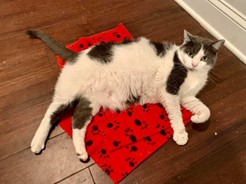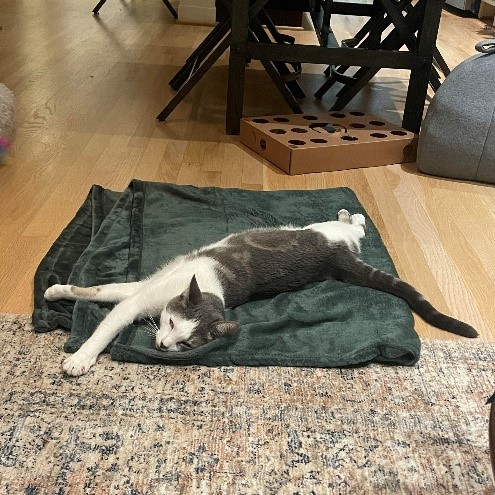Picture1.jpg

Images courtesy of Laura Cassiday, CCBC
Pets that constantly jump on tables or countertops can be a big problem for their caregivers. Whether your dog is grabbing food when your back is turned, or your cat is walking across the table with dirty paws, this behavior needs to be nipped in the bud. Cats and dogs are naturally curious and always looking for food or new places to explore. While this behavior comes from their survival instincts, it can be managed with consistent training and environmental changes.
What is the Function?
When addressing counter-surfing, the first step is figuring out why your pet is doing it. Pets usually jump on counters for one of these reasons:
- Looking for Food: If they see a chance to get food, your pet will take it. They quickly learn that counters and tables often have tasty food that they cannot get any other way.
- Curiosity and Exploration: Pets, especially cats, are naturally curious. Counters give them a new view and let them explore their surroundings from a different angle.
- Seeking Attention: Some pets jump on counters to get your attention. Even negative attention, like yelling or using a squirt bottle, might make them continue the behavior because they are still getting attention.
Once you understand why your pet is counter-surfing, you can address the root cause and stop the behavior.
Setting Your Pet Up for Success: Managing Antecedents
Controlling the environment and managing antecedents can help reduce or stop your pet from jumping on counters. You can set your cat or dog up for success by trying these methods:
- Remove Temptations: Keep counters clear of food when you are not watching. Store food securely in cabinets or the refrigerator. If your pet is extra clever, consider using child locks or pet-proof containers that they cannot open.
- Clean Thoroughly: Regularly wipe counters to remove any food smells that might attract your pet.
- Ignore Attention-Seeking Behavior: If your pet jumps on the counter for attention, do not reward them by reacting. Instead, calmly and consistently redirect them to something more appropriate, like a food puzzle or toy. Remember to reward them when they behave well.
- Provide Alternatives: Give your pets plenty of other activities to keep them busy. Cats naturally like to climb and watch from high places, so provide appropriate surfaces and climbing structures to keep them off the counters.
By reducing the temptation to jump on counters, it is easier for your pets to succeed and for you to reinforce good behaviors.
Mat Training: Teaching an Incompatible Behavior
One effective way to stop counter-surfing is to teach your pet a behavior that cannot be done at the same time as jumping on counters. By using mat training, you can teach your cat or dog to stay in a specific spot, such as a mat or an area in the kitchen, during meal preparation, or when food is around.
Picture2.jpg

Images courtesy of Laura Cassiday, CCBC
- Pick a Spot: Choose a place where you want your pet to stay, such as a comfy mat, bed, or perch for cats.
- Positive Reinforcement: Use treats and praise to reward your pet for staying on their mat. Start with short durations and slowly increase the time they are expected to stay. If your pet gets up and heads for the table or counter, gently guide them back to the mat by tossing treats.
- Consistency: Each time you prepare food or eat, guide your pet to their spot and reward them for staying there.
- Practice Makes Perfect. Over time, your pet will associate staying on the mat with positive experiences and rewards, making it prefer the mat over counters or tables.
Picture3.jpg

Images courtesy of Laura Cassiday, CCBC
When you understand why your pet is counter-surfing, take steps to help them succeed. Using positive training methods like mat training, providing alternative spaces, and managing antecedents can greatly reduce counter-surfing. With patience, consistency, and a focus on rewarding desired behaviors, you can help your pets develop better habits and keep your counters and tables pet-free.
Picture4.jpg

Images courtesy of Laura Cassiday, CCBC